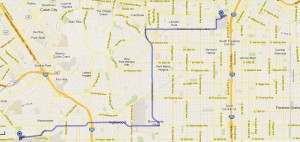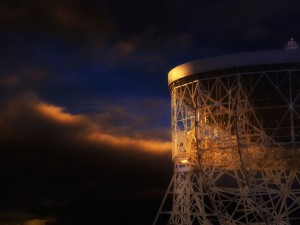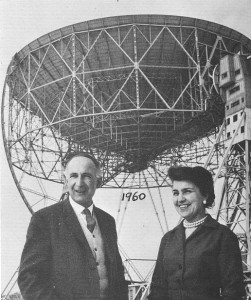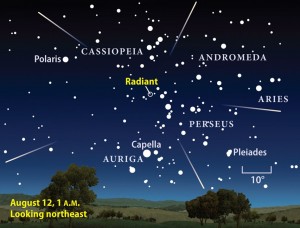The Morning After
12 08 2012Comments : Comments Off on The Morning After
Categories : Observatories
And…we are go for liftoff.
10 08 2012I’ve returned to this post to add the above photo, which was taken by my partner during the #MSL #NASATweetup last November. That’s the Space Shuttle Endeavour during decommissioning. Over a period of several months, every Shuttle went through a decontamination process, with some toxic elements shipped offsite for remediation. During the same time period, NASA harvested select components, like the orbital maneuvering system (OMS) pods and the main engines, for potential re-use in next-generation spacecraft. While we were at Kennedy Space Center for the MSL launch, we were fortunate to be escorted into the VAB for an up-close and personal look at Endeavour right after the OMS and Forward Reaction Control System (FRCS) came out. I’d show you more views of Endeavour in the VAB, but apparently my partner and I were both too busy staring and saying things like, “Oh my god, it’s RIGHT THERE!” to take photos.
I won’t make that mistake the next time I see Endeavour. And I will see Endeavour again. I just purchased a plane ticket to Los Angeles and while I’m going to be doing some “real work” while I’m there, I’m planning on walking/running as much of the twelve mile route between LAX and the California Science Center as the people in charge of move will allow. I’ve got plans to go up to Mount Wilson Observatory while I’m in the area as well, so this page should be overflowing with photos and commentary come the middle of October. Fun times ahead!
Comments : Comments Off on And…we are go for liftoff.
Categories : Endeavour, NASA, News, Space Shuttle
Proof of House Moving
9 08 2012Let’s hope they don’t have to cut the top off Endeavour in order to clear the power lines of Inglewood.
Comments : Comments Off on Proof of House Moving
Categories : News
Road Trip
8 08 2012I’ve written before about the dispersal of the Space Shuttle fleet around the United States (see earlier posts here and here) and promised to return to the topic when I knew more about Endeavour’s arrival in Los Angeles. The California Science Center just released the map showing the route the Shuttle will take on surface streets between LAX and the museum, which is located just across Exposition Boulevard from USC.
I’m super excited by the prospect of the move. I volunteer for an affordable housing program that moves historic houses across town every so often; in fact, we’re moving a house tomorrow, an expensive and complicated task. If the move is scheduled for a weekday, it needs to happen when it won’t conflict with peak commuting hours (the house rolls at 9 a.m. tomorrow). A house on a flatbed is a relatively tall object and a few power lines always need to come down along the route. It costs something like $10,000 to cut and reconnect a power line in our county, so the organization always searches for the least “wired” route through town.
Now, imagine moving a spacecraft in Los Angeles, the high-density-traffic capital of the world. There’s a reason the move starts in the middle of the night on October 12 (formal ceremonies are the morning of October 13 at Inglewood City Hall). The route crosses the 405, not a place you want to be during rush hour on a weekday. Ironically, it sounds like a few trees along the route may pose the greatest challenge to the mission’s success. Transport will take all day, so there will be plenty of time to get your space geek on.
I’m trying to decide if I can justify making a trip to Los Angeles to witness the transfer in person. I’m a little attached to Endeavour—I was lucky enough to see it in the VAB at Kennedy Space Center during its decommissioning—and I’d like to see at least one Space Shuttle make its final journey. I’m sure you’ll read about it here if I can make the trip happen for me.
Comments : Comments Off on Road Trip
Categories : Endeavour, NASA, News, Space Shuttle
Wallpaper Wednesday
8 08 2012Today’s wallpaper commemorates the career of Bernard Lovell, pioneer of radio astronomy. Click on the image to reach the download page.
Comments : Comments Off on Wallpaper Wednesday
Categories : Instruments, Telescopes, Wallpaper
Sir Bernard Lovell OBE FRS (b. 1913-d. 2012)
7 08 2012Bernard Lovell, founder of Jodrell Bank, died yesterday, August 6, 2012, at the age of 98. Please visit the Jodrell Bank Centre for Astrophysics website for his obituary, an online book of condolence, links to audio and viedo interviews, and links to his 1958 BBC Reith Lectures. Click here for a few images and my post on the 76-meter Mark I (Lovell) Telescope.
Comments : Comments Off on Sir Bernard Lovell OBE FRS (b. 1913-d. 2012)
Categories : News, Observatories
Gale Crater
6 08 2012I’m seeing a steady stream of hits on this site by people searching for maps of Gale Crater. I included a few maps in an earlier post about the MSL launch, but the best collection can be found on the HiRISE site. I recommend in particular the collection gathered during the landing proposal phase of the MSL project. You can also do a search on the words “Gale Crater” or browse through the image catalog to look at the most recent images.
The JPL’s Explore Mars! site includes a tool for exploring Gale Crater. Use the navigation bar at the top of the page or click on any of the topographic tags to zoom and read more about the crater’s features. And of course, you don’t want to overlook Google Mars. Don’t expect to get any work done once you open that page up, though.
Comments : Comments Off on Gale Crater
Categories : Instruments, Mars Science Laboratory, NASA
Wheels Down
6 08 2012You should be impressed. It’s two o’clock in the morning and I’m writing a blog post. Without my glasses. Proof of landing above, more images and explanations to follow tomorrow.
Comments : Comments Off on Wheels Down
Categories : Instruments, Mars Science Laboratory, NASA, News
MSL Raw Images
5 08 2012
This image was taken by Front Hazcam: Left A (FHAZ_LEFT_A) onboard NASA’s Mars rover Curiosity on Sol 0 (2012-08-06 06:23:34 UTC). Image Credit: NASA/JPL-Caltech
Future Mars Science Laboratory raw images will be collected at http://mars.jpl.nasa.gov/msl/multimedia/raw/. Check back for the early images returned by Curiosity!
ETA: Try http://mars.jpl.nasa.gov/msl/multimedia/images/ if the raw images aren’t working in your browser. If you’re using Chrome, try clearing your cache. If you still can’t load the raw images, try IE.
Comments : Comments Off on MSL Raw Images
Categories : Instruments, Mars Science Laboratory, NASA, News
Perseid Meteor Shower
3 08 2012
Perseid meteor shower, Stellafane Observatory, Springfield, Vermont, August 7, 2010. Photo credit: Dennis di Cicco, Sky & Telescope
At the risk of angering everyone I know, I’m going to admit that I’m suffering from a surfeit of Curiosity. I’ll be waiting up Sunday night for the MSL landing, but in the meantime, I’m not sure I can absorb much more information about the mission. So, instead of talking more about current events, I’m going to daydream about the future.
If all goes well (meaning: if my friend responds appropriately to the gentle pressure I will be putting on her next week and if the weather cooperates), we will be going out to Paynetown for the Perseid Meteor Party. The timing is perfect: it’s a Saturday night, so we can sleep in a bit the next morning, and the moon will be on the wane, so its light won’t interfere with show.
The Perseid meteors, which are actually debris from the tail of Comet Swift-Tuttle, emanate from the constellation Perseus. If you’re not super familiar with the sky, you may not be familiar with that particular constellation. That’s okay. Look instead for Cassiopeia (you know, the one that looks like a W). The shower’s radiant point will be between the W and the horizon.
Although it’s not impossible to see Perseids from the southern hemisphere, they’re much more visible from the northern. Those of you in Canada may have already noticed an increased number of meteors in the late night sky. That number will only increase over the next week, so keep looking up. No telescope needed, just your naked eye!
ETA: Need some meteor-watching advice? Check Meteorwatch’s page on the Perseid Meteor Shower.
Those of you who arrived at this page while looking for information about the Goldendale Observatory will be glad to know that the observatory is hosting a meteor watch on August 11 beginning at 11:00 p.m. (after the regularly scheduled skywatching session), running until 4:00 a.m. LIGO Hanford is also hosting a meteor-watching event on August 11 from 8:00 p.m. to 1:00 a.m.
Comments : Comments Off on Perseid Meteor Shower
Categories : News








